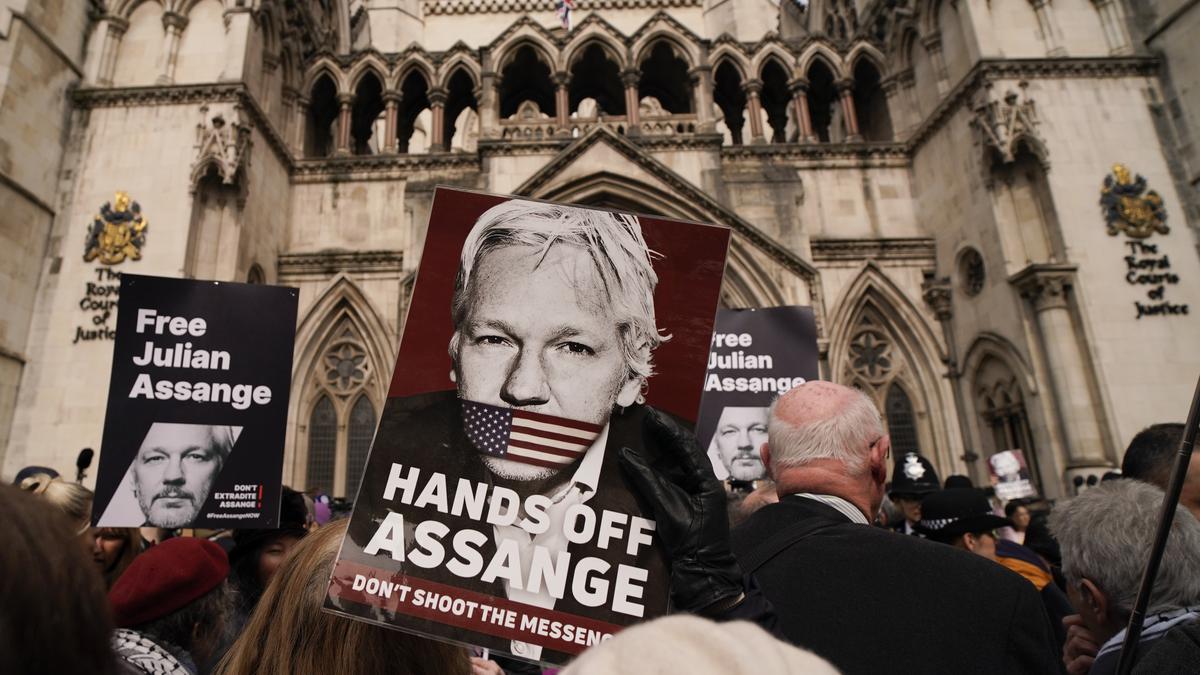
How Julian Assange walked out of U.S. court a “free man” : Explained
The Hindu
Understand how Wikileaks founder Julian Assange walked out of U.S. court as a free man?
The story so far: In a dramatic conclusion to an extradition saga that lasted more than a decade, WikiLeaks founder Julian Assange on June 26 pleaded guilty to violating espionage law, allowing him to walk free to return to his home in Australia, as part of a landmark deal with U.S. Justice Department.
Mr. Assange, who founded the whistleblower media group WikiLeaks in 2006, released classified documents relating to the U.S. wars in Iraq and Afghanistan in 2010, among several others. He was sentenced to the five years he had already served in a British prison while fighting to avoid extradition to the U.S. Mr. Assange had left the British prison on June 24 to appear before a U.S. federal court in the Mariana Islands, a U.S. commonwealth in the Western Pacific.
Born in 1971 in Townsville, Australia, Julian Assange studied mathematics and physics at the University of Melbourne but dropped out before completing his degree. In 2006, he launched WikiLeaks, which publishes large datasets of “censored or otherwise restricted official materials involving war, spying and corruption.”
Also Read | How did WikiLeaks get Julian Assange in so much trouble?
The website first grabbed global attention in 2010 when it published a cache of around half a million sensitive military files on Iraq and Afghanistan, including a classified video from 2007 that showed an Apache helicopter firing indiscriminately, killing a dozen people, including two Reuters correspondents in Baghdad. Around 250,000 secret diplomatic cables from U.S. embassies were also released.
The leaks caused ripples across the globe, with the U.S. government launching an inquiry into one of the largest security breaches in its military history.
In September 2010, Mr. Assange fled to Britain after an investigation was launched into alleged sex crimes by him, based on the accusations of two Swedish WikiLeaks volunteers. The British police arrested him two months later. The WikiLeaks founder, however, denied the charges and claimed that the case was a pretext to extradite him to the U.S. He subsequently filed multiple pleas against extradition to Sweden but relief evaded him. In June 2012, shortly after the UK Supreme Court rejected his final challenge against extradition to Sweden, Mr. Assange went to the Ecuadorean embassy in London seeking asylum. While the Swedish prosecutors dropped their investigation in 2017, the British police maintained that Mr. Assange would be arrested. He remained in the embassy for seven years.

President Donald Trump is now facing renewed scrutiny over his links to Epstein. During his campaign, Trump said he would have no problem releasing the Epstein files. But since returning to political life, he has dismissed them as fabrications, claiming they were pushed by his Democratic opponents. Let’s take a look at what Epstein files are and why it has once again become the center of political controversy in the United States.





















 Run 3 Space | Play Space Running Game
Run 3 Space | Play Space Running Game Traffic Jam 3D | Online Racing Game
Traffic Jam 3D | Online Racing Game Duck Hunt | Play Old Classic Game
Duck Hunt | Play Old Classic Game










